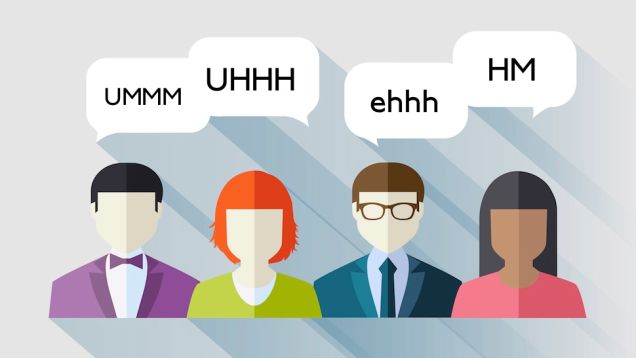In the professional world, as well as in normal day to day speaking, the use of the word “uh” and “um” can go from filler to annoyance in 5 minutes. A few here and there isn’t the end of the world, but using it twenty times in a paragraph can make you sound nervous and ignorant.
Forbes magazine recently released a piece that offers advice on how to get rid of the dreaded filled that is pretty helpful.
Hear Yourself Using Filler Words. If you listen to a recording of a conference call where you regularly say “Um,” you will have a natural urge to cringe. This is an important first step in ridding yourself of filler words. An added bonus, once you hear yourself filling silence with “Um,” you will begin noticing when other people do it too. So get out that video camera to record a presentation or listen to an audio recording of a recent call. Face the music. Remember, you can’t change what you don’t acknowledge.
Chunk Your Information. One thing is for sure – we’re most likely to engage in waterfall speech —or rambling—when we lack a plan for organizing our ideas. Presentation trainer Olivia Mitchell recommends chunking your sentences ahead of speaking them and then leaving a pause. Says Mitchell, “When you chunk, you get into a rhythm: burst of words/break/burst of words/break… Focus on that rhythm and your um’s will go.”
Make Eye Contact. It becomes much more awkward to say “Um” when making full, engaging eye contact with a person. In your next meeting, experiment with turning your torso and eye gaze toward each person in the room, giving your attention inclusively. If you’re on a conference call, don’t pace or stare out the window blankly, but turn your attention to your notes or script. Both in-person and on the phone, your “Um’s” will lessen.
Pre-plan Your Transitions. One of the functions of “Um” is to tell your audience that you’re not done talking yet and need to gather your thoughts. As an alternative, have some ready transitions to use in any presentation or meeting, such as “Let’s move on to…”, “Another important consideration is…” or even “Let’s transition to talking about…” Practicing these go-to transitions will begin to feel natural and will lessen your dependence on saying, “Um.”







